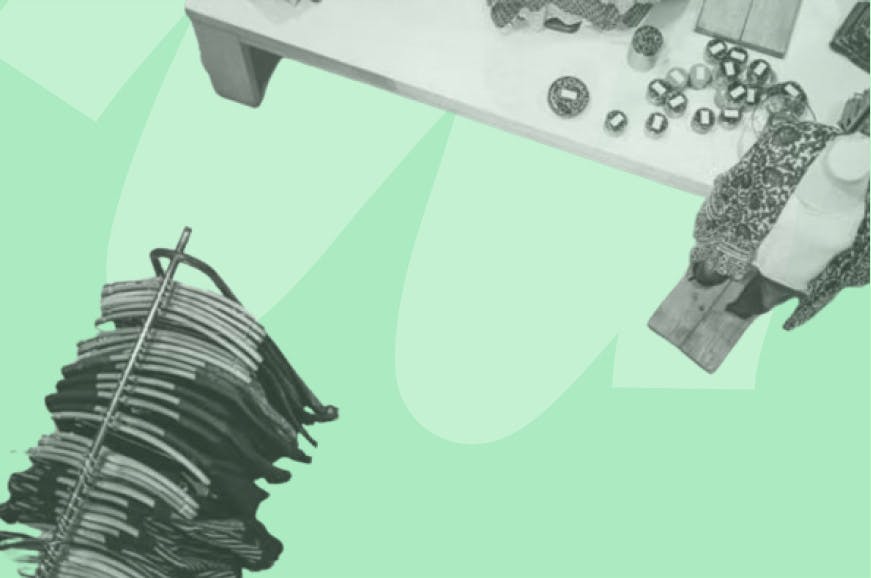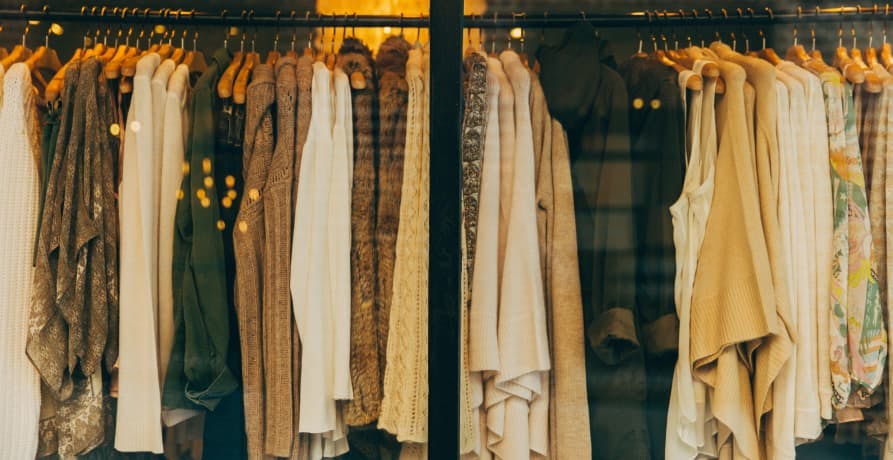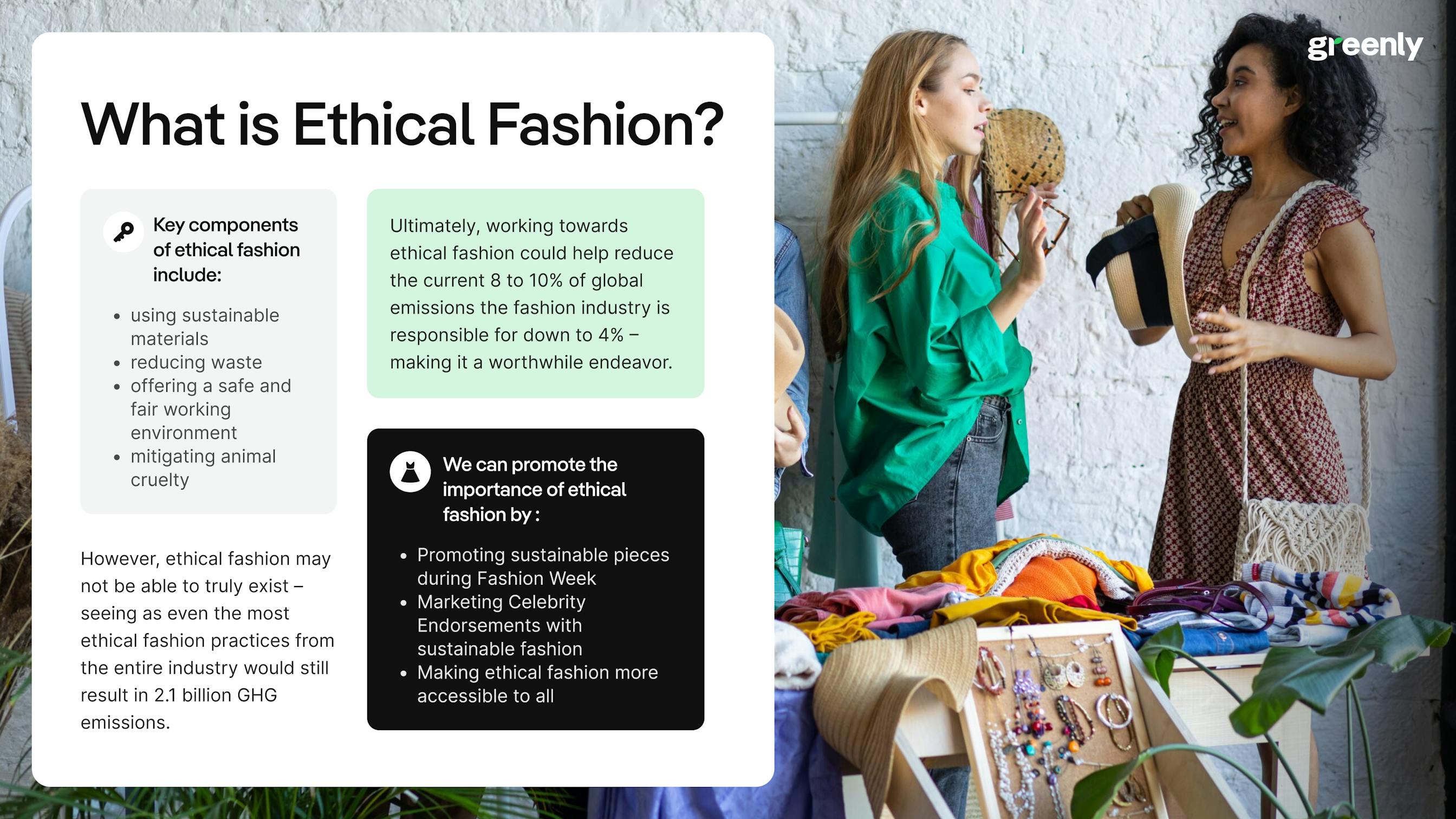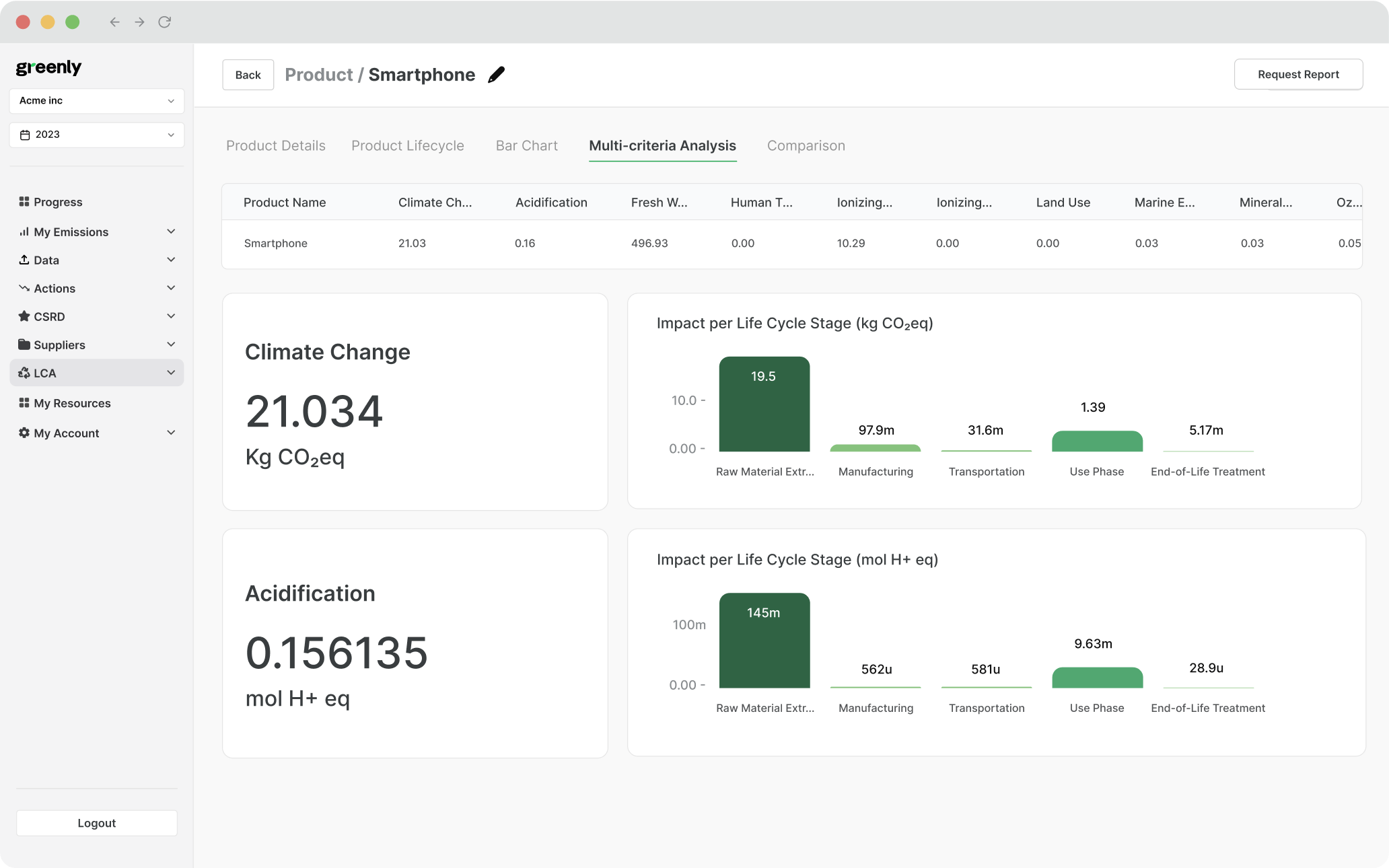ESG / CSR
Industries
5 Ideas to Become a Sustainable Fashion Brand Company



Do you want to make your designs come to life by creating your own fashion brand company and advertising the importance of sustainable clothing? Good news – the fashion industry’s current lack of sustainable practices and next to no truly sustainable brand for clothes make it the perfect time to jump into the clothing industry.
Two of the biggest issues to tackle include the carbon dioxide emissions and the waste created by the production practices in the fashion industry – both of which have accelerated in recent years. The system is highly inefficient, however, for lack of a better word – broken.
💡 However, there’s beauty in turning trash into treasure – as sustainable fashion offers incredibly relevant challenges for our time and plenty of room to innovate.
In this article, we'll provide a few tips to help you get you started on your journey to become a sustainable fashion brand company.

A quick reminder about fashion industry
The fashion industry we know today is symptomatic of globalisation, e-commerce, and fast-changing trends, thanks to social media. Consumers keep their style up-to-date with the click of a button.
💡 However, this endless stream of disposable fashion has immense consequences our environmental footprint – as a lack of fair labor practices or ethical supply chains both make fashion production less than optimal for the planet.
Let’s first step back to understand the underlying framework that the fashion industry relies on to produce and sell garments.
What is the fashion industry?
Before clothing from a fashion brand company reaches our closets, it passes through hundreds of hands to get there. Production begins with raw materials which are usually grown in agricultural fields for natural fibers or synthesized from fossil fuel feedstocks for synthetic fibers like polyester.
👉 These raw materials are transformed into textiles and trimmings that designers use as the building blocks of their designs. Fashion brands must source their materials wisely to keep costs down, which in turn – ethical or sustainable sourcing can also lead to more sustainable fashion.
Fashion companies create designs and sewing specs for their products to mass produce them in factories. Once the textiles are manufactured into garments, they are then shipped to warehouses or retail outlets to be sold.
To sell these garments, fashion companies in the fashion sector need to have strong branding to reach and engage their target market. They may undergo intense market research to establish the right price point, placement, and strategic marketing for their products in order to sell enough to earn revenue.
All of these steps, from fair labor standards, eco-friendly practices, to clothing production come together to form the fashion industry as we know it.

Some figures about the fashion market
To understand the massive scope of the fashion industry’s global impact, let’s take a look at some key figures:
- The market size of the global fashion industry totals to $3 trillion in the U.S. and 2% of the world’s GDP
- Fashion industry revenues in 2021 were US $1.55 trillion.
- A total of 3.3 million employees work in the fashion industry.
💡 The highest earning fashion companies are French luxury conglomerate Louis Vuitton Moët Hennessy (LVMH), Nike, and Inditex (which owns Zara, Pull&Bear, and Stradivarius among other brands).
As the revenue for the textile industry amounts to over $358 billion USD, with an expected annual growth rate of 2.82% – the need for clothing brands to tackle sustainable production and produce clothing aligned with the ideals of ethical fashion has never been more important.
👉 Remember, China exports more apparel than any other country, while the US is the largest apparel market in the world. Estimates show that the total number of garments produced each year has doubled since 2000 and this trend shows no sign of slowing.


The fashion industry’s impact on the environment
Although the fashion industry helps to boost our global economy, there are hidden costs to the fashion system – such as how it depletes through natural resources, exacerbates climate change, harms wildlife, and impacts our health.
💡 The fashion industry contributes to climate change more than flights or shipping, as estimates suggest that it is responsible for 10% of worldwide carbon dioxide emissions each year.
What causes the excess emissions created by the fashion industry?
Plastic Usage
The because fashion has become more dependent on polyester (plastic) fibers than the cotton industry or other natural fibers or recycled fabrics. As a whole, PET plastic clothing often comes from reused plastics, such as recycled plastic bottles – but the impact of these garments remain substantial. These synthetic fibers are made from fossil fuel feedstocks, and they require three times the amount of energy (282 billion tons of carbon dioxide) to produce than cotton.
💡 A fifth of all plastic produced each year, about 60 million tons, is used by the fashion industry. This amount is expected to increase as oil companies compensate for declining demand for gas used in transportation.
Waste Production
The main problem with fast fashion is that we cannot afford to shift this fossil fuel burning burden from one industry (transportation) to the next (plastics and fashion). Therefore, it's time for industries across the board to lower their GHG emissions to avoid the disastrous consequences of climate change.
👉 In the US, 11.3 million tons of textiles get disposed of each year. This equals 2150 garments per second!
Some of this waste comes from consumer behavior: people wear garments an average of 7 to 10 times before discarding them. A study in the UK found that a third of clothing buyers will discard an item after wearing it once or twice, which explains the recent uptick in thrift shopping and secondhand clothing.
After clothing is discarded, it faces one of three possible outcomes: being thrown in the landfill, incineration, or recycling. However, the amount of materials recycled (around 15%) is minimal compared to the 11.3 million tonnes (around 85%) which gets thrown in landfills in the US.
Consumers aren’t the only ones contributing to the waste problem. Fashion brands also landfill or burn unsold stock, and these practices often take place in developing countries without high air quality standards or proper waste disposal infrastructure.
How much unsold stock is there? In 2018, fast fashion giant H&M reported it had amassed $4.3 billion worth of items that it could not sell. Overproduction is as much a part of the problem as excess consumerism.
Excess Consumerism
Consumers aren’t the only ones contributing to the waste problem. Fashion brands also landfill or burn unsold stock, and these practices often take place in developing countries without high air quality standards or proper waste disposal infrastructure.
The amount of unsold stock is often alarming, an in turn – big name brands will often resort to throwing these clothes away in landfills. For example, in 2018, fast fashion giant H&M reported it had amassed $4.3 billion worth of items that it could not sell.
👉 Therefore, overproduction is as much a part of the problem as excess consumption patterns – as local industries often value excess consumerism over slow fashion or implementing long-term sustainability initiatives to support the current climate crisis.
Wildlife Impact
This is because once synthetic fibers reach the environment, they release microplastics into our water, soil, and eventually our bloodstreams. A study recently detected microplastics in human bloodstreams for the first time.
While the full health consequences of microplastics are still unknown, some plastics are linked to health risks as diverse as cancer, endocrine disruption, birth defects, impaired immunity, and developmental and reproductive difficulties.
Scientists have traced the 71% of microplastics sampled in river water and 35% of the microplastics in oceans to clothing fibers. This means textiles contribute more than any other type of plastic material to ocean microplastic pollution, where it impacts marine life as well.
The table below will further breakdown the impact that the fast fashion industry has on all of these areas:
| Impact Area | Description |
|---|---|
| Plastic Pollution | Fast fashion relies heavily on synthetic fibers such as polyester, nylon, and acrylic, which shed microplastics during washing. These microplastics accumulate in oceans and ecosystems, posing threats to marine life and entering the food chain. |
| Ocean Pollution | Textile dyeing and production release toxic chemicals and dyes into water bodies, contaminating drinking water sources and harming aquatic organisms. Runoff from factories often leads to high levels of water pollution. |
| Waste Production | Millions of tons of clothing end up in landfills every year due to the disposable nature of fast fashion. Non-biodegradable fabrics contribute to landfill overflow, taking decades to decompose and releasing greenhouse gases. |
| Wildlife | Deforestation for raw material production, pollution from textile chemicals, and microplastic ingestion harm wildlife habitats, disrupt ecosystems, and pose serious health risks to animals. |
| Excess Consumerism | Fast fashion promotes a culture of overconsumption, leading to short-lived trends, increased demand for cheap clothing, and unsustainable production cycles that strain natural resources and energy. |
👉 All of these environmental impacts reflect a vicious cycle in which clothing manufacturers encourage the fast turnover of trends, mitigating the value of zero waste, sustainable production methods, or working towards net zero emissions. This allows them to continue selling vast amounts of disposable clothing to increase their revenue as opposed to promoting the value in a sustainable wardrobe, encouraging consumers buy into this “fast fashion” system.

What is sustainable fashion?
As bleak as the challenges of the fashion industry may seem, there is an alternative: sustainable fashion.
Definition of sustainable fashion
Sustainable fashion is a broad term that generally aligns with the definition of sustainable development outlined in the 1987 Bruntland Commission Our Common Future report: meaning that it should meet the needs of the present without compromising the ability of future generations to meet their needs.
In practice, this may seem somewhat vague, so The Centre for Sustainable Fashion lists a number of principles to sustainable fashion in its glossary. Key themes within sustainable fashion are:
- Business accountability – This broad phrase covers issues as diverse as transparent supply chains to disclosing executive pay. Create a CSR strategy to get started.
- Declaring a climate emergency – Pursuing carbon dioxide emissions reduction strategies in line with science.
- UN Sustainable Development Goals – A total of 17 global goals address the social and environmental impacts of development including poverty, gender inequality, resource use, biodiversity, and other.
- Fair Trade – Eliminating modern slavery from supply chains and ensuring fair wages and pay for workers.
- DEI – Fashion diversity, equity and inclusion in marketing, selection of models, sizing offers, designs, and other elements of the industry.
- Circular economy – Since most fashion business models follow a linear economy that centers on products whose value quickly depreciates, alternate models such as second hand clothing sales or circular fashion might focus on clothing rentals, clothing repairs, the use of natural materials, a leather alternative, or life cycle assessments to design new clothing for reuse or recycling.
- Limiting growth – Examples include minimal fashion, designing high-quality products for long-term use in classic styles, and promoting repeat wears in branding and advertising materials.

Which consumers are looking for sustainable fashion?
The good news is people have never been more passionate about sustainable fashion, especially younger consumers.
💡 A global survey of 10,000 Gen Z and Millennial consumers showed that 65% worry about the environment, 80% want to buy mostly sustainable products, and 40% believe the fashion industry is unsustainable.
5 tips to become a sustainable fashion brand company
Here are some things to consider when starting a fashion brand company.
Develop a strong know-how of fashion
To break the mold in fashion, you’ll first need to understand how the fashion system works. Gaining industry experience is one of the best ways to start to understand the complexities of the fashion industry. Otherwise, you could make costly mistakes.
There are numerous ways to expand your knowledge: such as by earning a degree in fashion, working for a fashion brand, networking by joining industry groups, attending fashion shows and conferences, and reading trade publications.
Ultimately, fashion is a business, so bringing transferable skills related to entrepreneurship such as business strategy, market research, team-building, and raising funds will all help you establish the basis to pursue your fashion brand.
Define your own sustainability policy
From the outset, establishing a sustainability mission for a new company will help establish the guidelines for operating a sustainable business.
💡 Two of the key elements in sustainable fashion are ethical production and sustainable materials sourcing.
Finding the right strategic balance and mission alignment is key.
Use eco-friendly materials
Choosing eco-friendly materials is important for sustainable fashion brand companies. Whether this means selecting organic, biodegradable natural fibers or recycled synthetics, remember to consider not just the end of life of the product itself, but the energy and labor required to produce it.
A wide range of co-friendly materials are available such as linen, Tencel, bamboo, certified organic cotton, or pineapple leather. You can easily compare their attributes on websites like Good On You.
Sometimes eco-friendly materials are sourced from the waste stream itself. This includes deadstock (unused) fabrics, or recycled materials.
Choosing eco-friendly packaging is another important detail to consider.
Create your brand design
After you have a sense of the type of materials you hope to use and where to get them, it’s time to identify your ideal buyer. Their desires, lifestyle, and habits will largely inspire and influence your branding approach.
This includes everything from your visual imagery to fonts, logos, and website design. Each element of your branding should express a consistent, unique approach to fashion that will pique the interest of your market.
Finally, it’s time to make designs. This requires unique technical skills: pattern making, garment construction, and prototyping. If you lack these skills, you can either learn, or hire people with the right knowledge to bring your vision to life.
💡 Once you’ve tested your patterns and created mock-ups, you can send them to a factory, where your garments can be mass produced. Factories require spec sheets from designers which dictate the specific construction details of a design for accurate replication.
Set up your label
Launching a label is so much more than stocking inventory. You’ll need to set up a website, social media accounts, photograph your designs, and a promotional strategy to get the word out about the fashion label.
New fashion brands often start generating interest months in advance of their actual launch. Therefore, it's wise to to build a mailing list, find press opportunities, and take pre-orders before your brand stocks anything to sell.
👉 Using all of these platforms to communicate the sustainable mission of the fashion brand company is a must if you want to find long-term success in the sustainable fashion industry.

What about Greenly?
If reading this article about the steps to become a sustainable fashion brand have inspired you to take more actions aligned with sustainability– you've found the right place!
Greenly supports businesses of all sizes to reduce carbon emissions with a process that makes carbon accounting an integral, but simple part of doing business. Our digital platform helps business owners assess which business activities create the most pollution. We’ll help you tackle them with an action plan.





